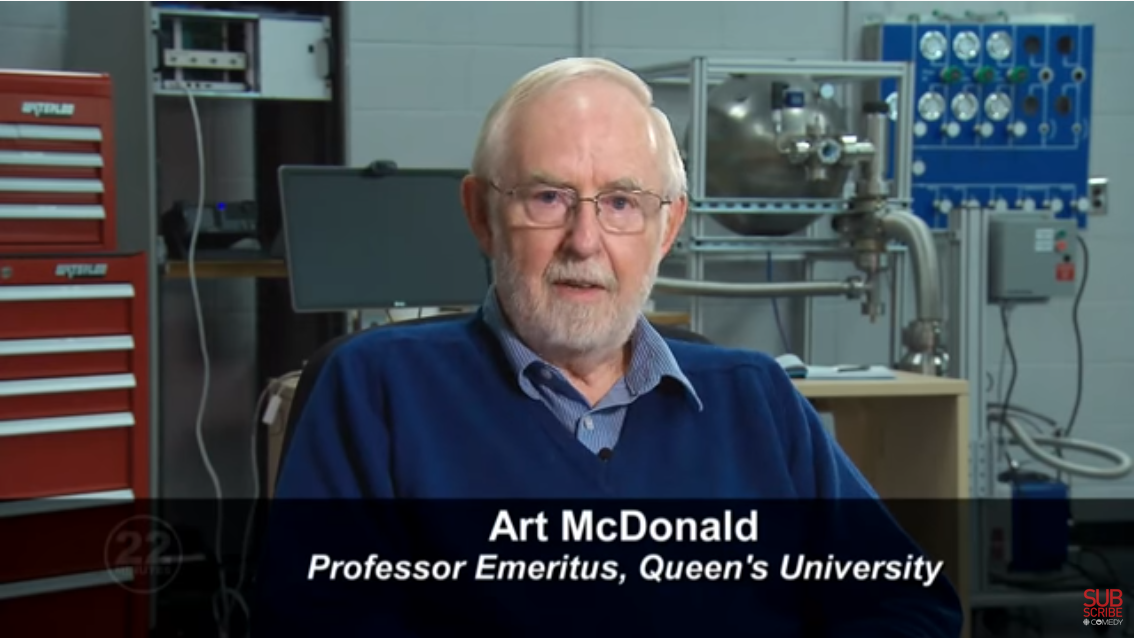The Queen's Particle Astrophysics group is a world leader in the field, and pursues questions at the intersection of astrophysics and particle physics. Questions such as:
- What is the nature of dark matter and dark energy?
- How have the properties of particles, like the neutrino, shaped the evolution of the universe?
- What are cosmic rays and what accelerates them?
- Are protons stable?
- Are there additional space-time dimensions?
Many of our members also belong to the Arthur B. McDonald Canadian Astroparticle Research Institute.
The Particle Astrophysics group has ten faculty members, including two theorists and nine experimentalists.
Experimental Group
Our research areas:
Members of the experimental particle astrophysics group are involved in a variety of projects to search for dark matter, better understand neutrinos, and develop new detector technologies. The SNOLAB facility in Canada is a unique world-class facility and one of the deepest laboratories for conducting this type of research. Members of the group at Queen's are heavily involved in a number of experiments at SNOLAB (DEAP-3600, SNO+, PICO, NEWS-G, SuperCDMS, SBC), as well as in experiments that are conducted in a number of other facilities worldwide (Majorana/LEGEND, IceCube, KDK).
Historically, the group has played a leadership role in the SNO experiment, culminating in one member of the group, Prof. McDonald, sharing the 2015 Nobel Prize in Physics. The group has since played an important role in establishing SNOLAB as well as the McDonald Institute for particle astrophysics. The experimental particle astrophysics group at Queen's University is one of the largest such groups in the world, and the establishment of the McDonald Institute provides a unique opportunity in Canada for a multi-disciplinary approach to particle astrophysics.
Please visit our Queen's Particle Astrophysics website for more information on research projects.
Faculty Members
- Mark Chen: neutrino physics, geoneutrinos, dark matter and cosmic rays, SNO+
- K. Clark: PICO experiment at SNOLAB, searching for dark matter, IceCube collaboration studying low-energy neutrinos at the South Pole, PINGU sub-detector
- P. Di Stefano: cryogenic detectors for dark matter and other applications
- G. Gerbier: dark matter searches with spherical gas detectors (NEWS-G)
- G. Giroux: dark matter, neutrinoless double beta decay
- R. Martin: neutrinos and dark matter, SNO+
- A. J. Noble: dark matter experiments at SNOLAB participating in the DEAP-3600 liquid argon experiment, and the PICO experiment using superheated fluids
- N. Park: High-energy neutrino observation (IceCube), Cosmic ray balloon experiments (HELIX), Very-high-energy gamma-rays (VERITAS), multi-messenger observations
- A. Wright: low energy solar neutrinos, neutrinoless double beta decay, geoneutrinos, and reactor antineutrinos, SNO+
Theory Group
About QHEAT
The Queen’s High Energy and Astroparticle Theory group (QHEAT) explores many open questions in fundamental physics including the nature of dark matter, the origin of the matter-antimatter asymmetry, new properties of neutrinos and new physics at the terascale and beyond. We are particularly interested in early universe cosmology, high-energy astrophysics, and novel observational signatures at underground and large-volume experiments. More information can be found on our website which will be coming soon.
Faculty Members
- J. Bramante: dark matter, cosmology, high energy theory
- A. Vincent: high-energy astrophysical neutrinos, cosmic rays, gamma rays, dark matter, and physics of cosmology
Emeriti
I. P. Johnstone: nuclear physics
J. R. Leslie: SNO (Sudbury Neutrino Observatory)
H-B. Mak: SNO (Sudbury Neutrino Observatory)
A. B. McDonald: SNO (Sudbury Neutrino Observatory) - Nobel Laureate in Physics (2015)
B. C. Robertson: SNO (Sudbury Neutrino Observatory)
"This Hour Has 22 Minutes" with Dr. McDonald

Hint: He uses a very iconic Canadian example!
